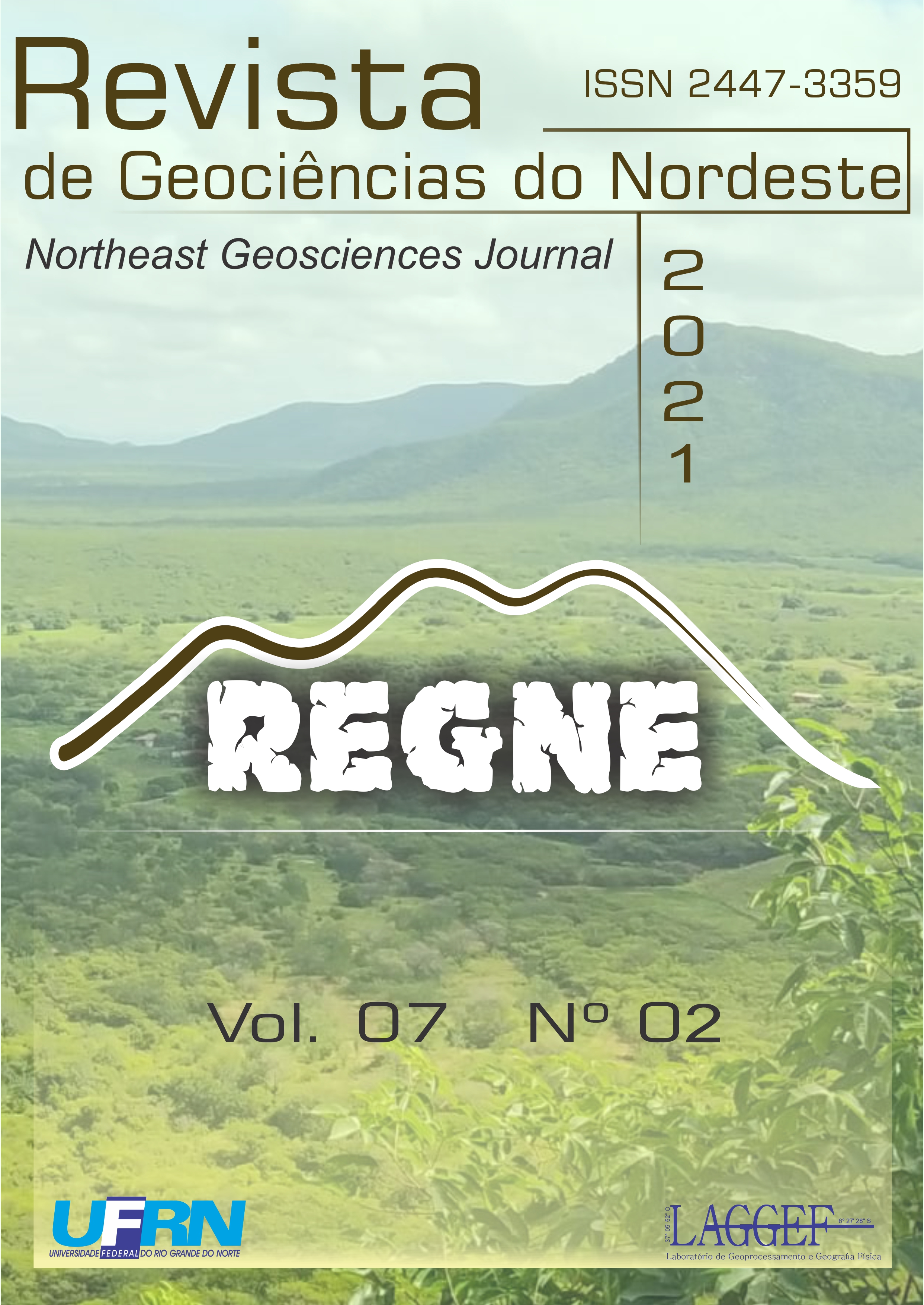Renovação das águas no complexo estuarino lagunar Mundaú-Manguaba (Alagoas, Brasil) sob diferentes configurações de embocaduras
DOI:
https://doi.org/10.21680/2447-3359.2021v7n2ID24914Resumo
O presente trabalho analisa as alterações morfológicas ocorridas no Complexo Estuarino Lagunar Mundaú-Manguaba (CELMM), através de técnicas de geoprocessamento e da modelagem computacional. Inicialmente realizou-se uma análise multitemporal das variações das linhas de costa entre o período de 1986 até 2017 a partir de imagens dos satélites Landsat 5-TM e Landsat 8-OLI. As imagens foram vetorizadas em ambiente de Sistema de Informações Geográficas (SIG) para a posterior realização do cálculo das taxas de erosão e acreção. Após isso, algumas simulações foram realizadas com o auxílio do Sistema Base de Hidrodinâmica Ambiental (SisBaHiA®) para os parâmetros tempo de residência e idade da água, considerando três cenários com configurações de embocaduras distintas (2006, 2014 e 2017). Os resultados indicaram o predomínio da deposição de sedimentos na região da embocadura, com a dinâmica migratória no sentido sudoeste-nordeste. O tempo de residência apontou possíveis áreas de estagnação na região noroeste da laguna Manguaba e nas porções noroeste e sudeste da laguna Mundaú. O cenário de 2014 apresentou menores idades das águas, mostrando que as diferentes configurações de embocaduras interferem na renovação das águas do complexo estuarino lagunar.


 Português (Brasil)
Português (Brasil) English
English








